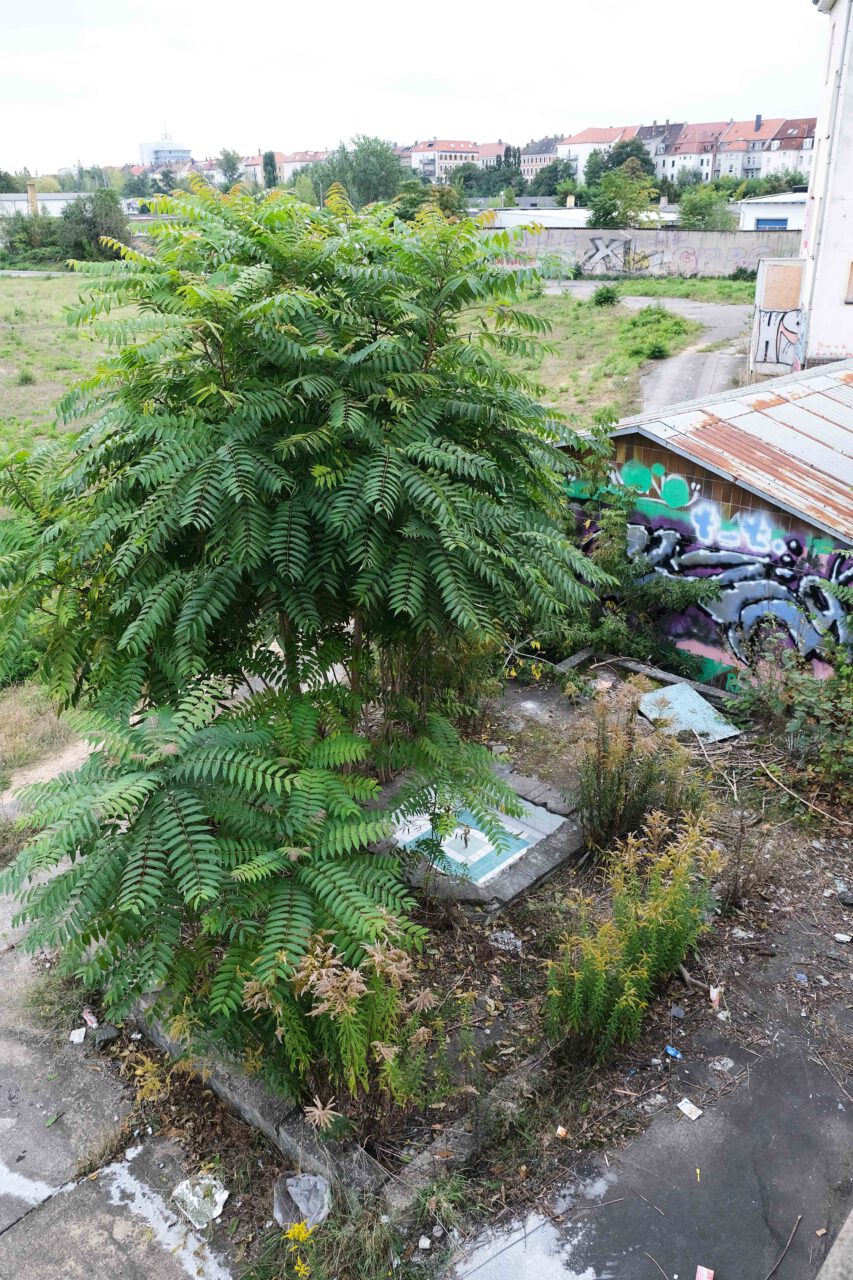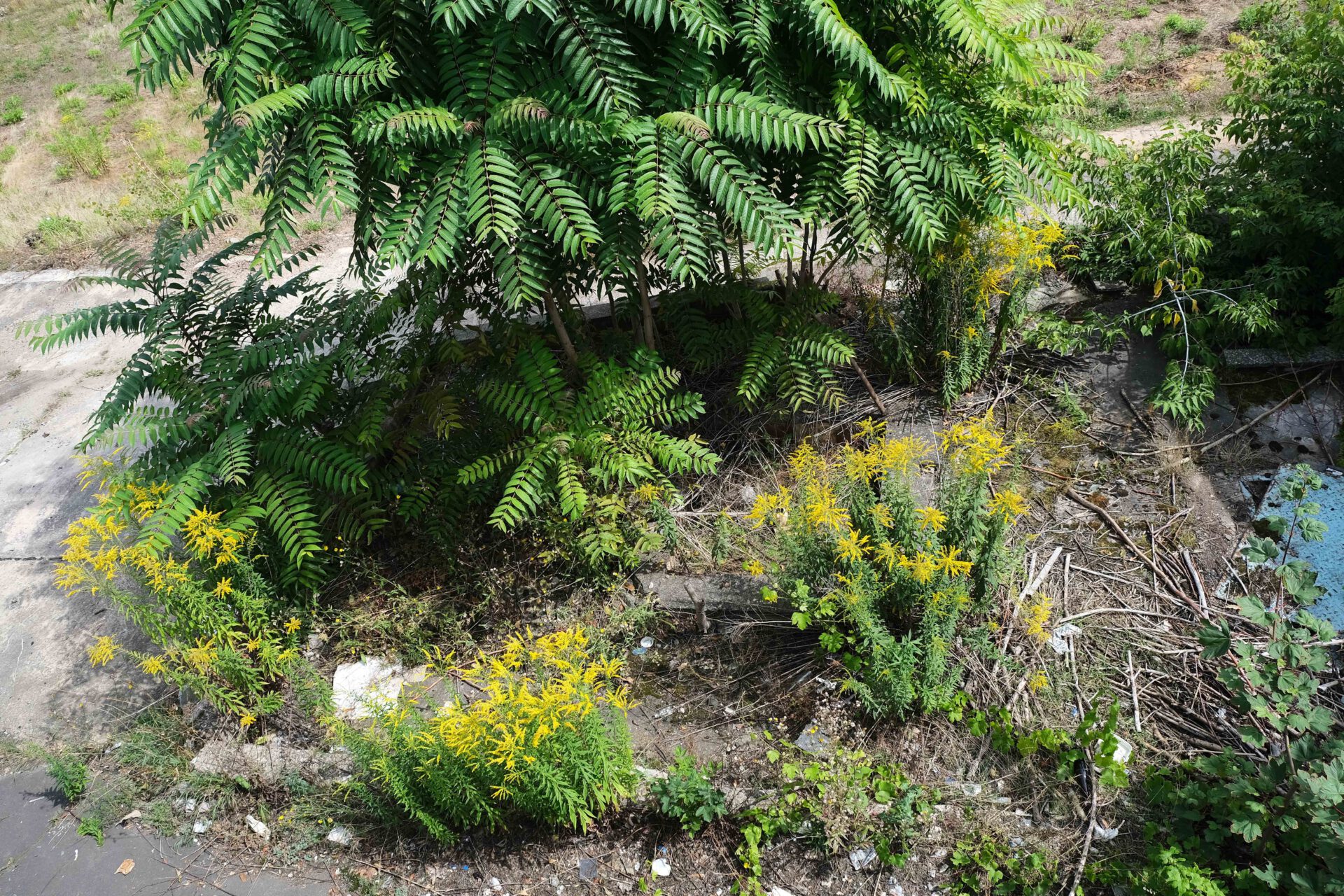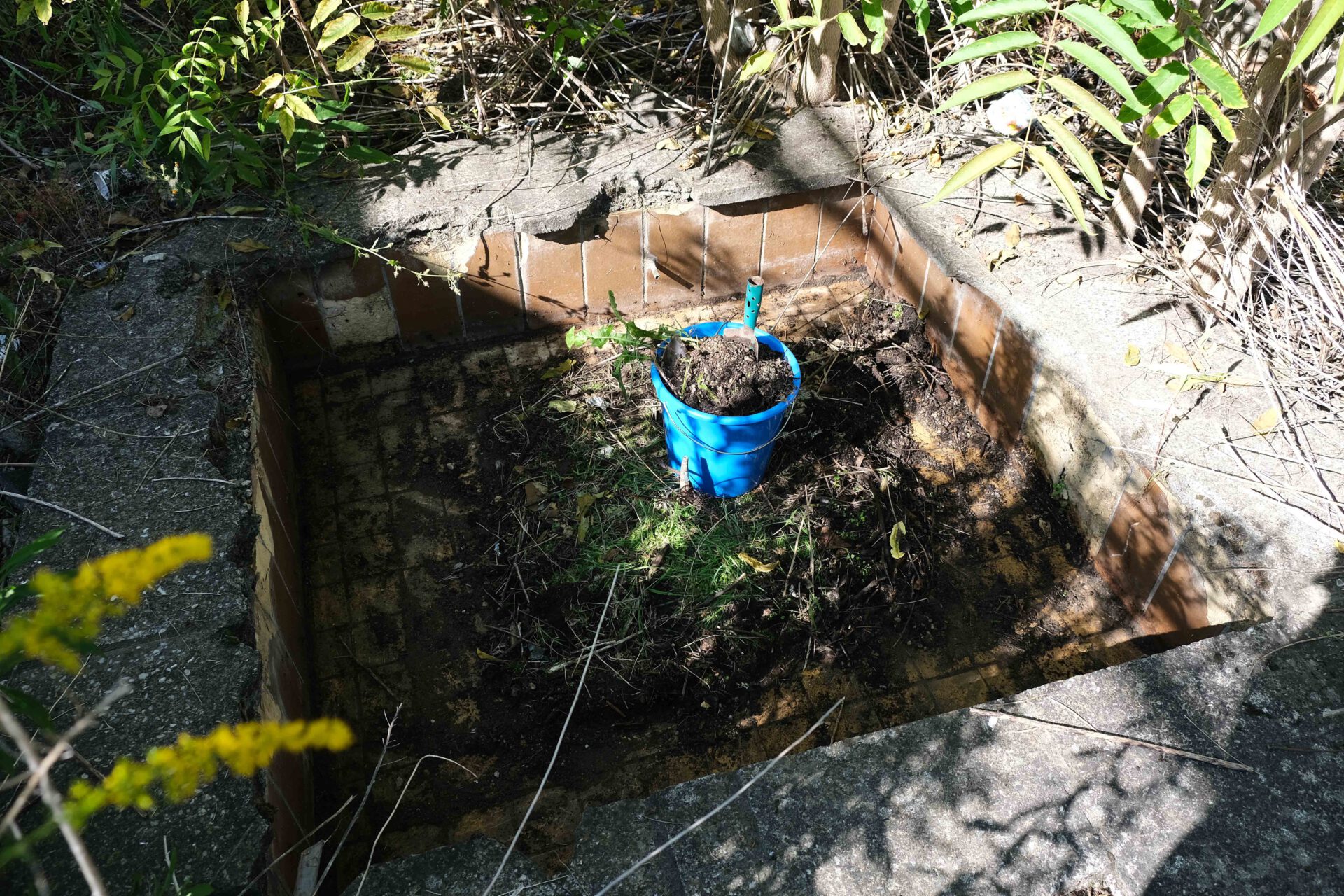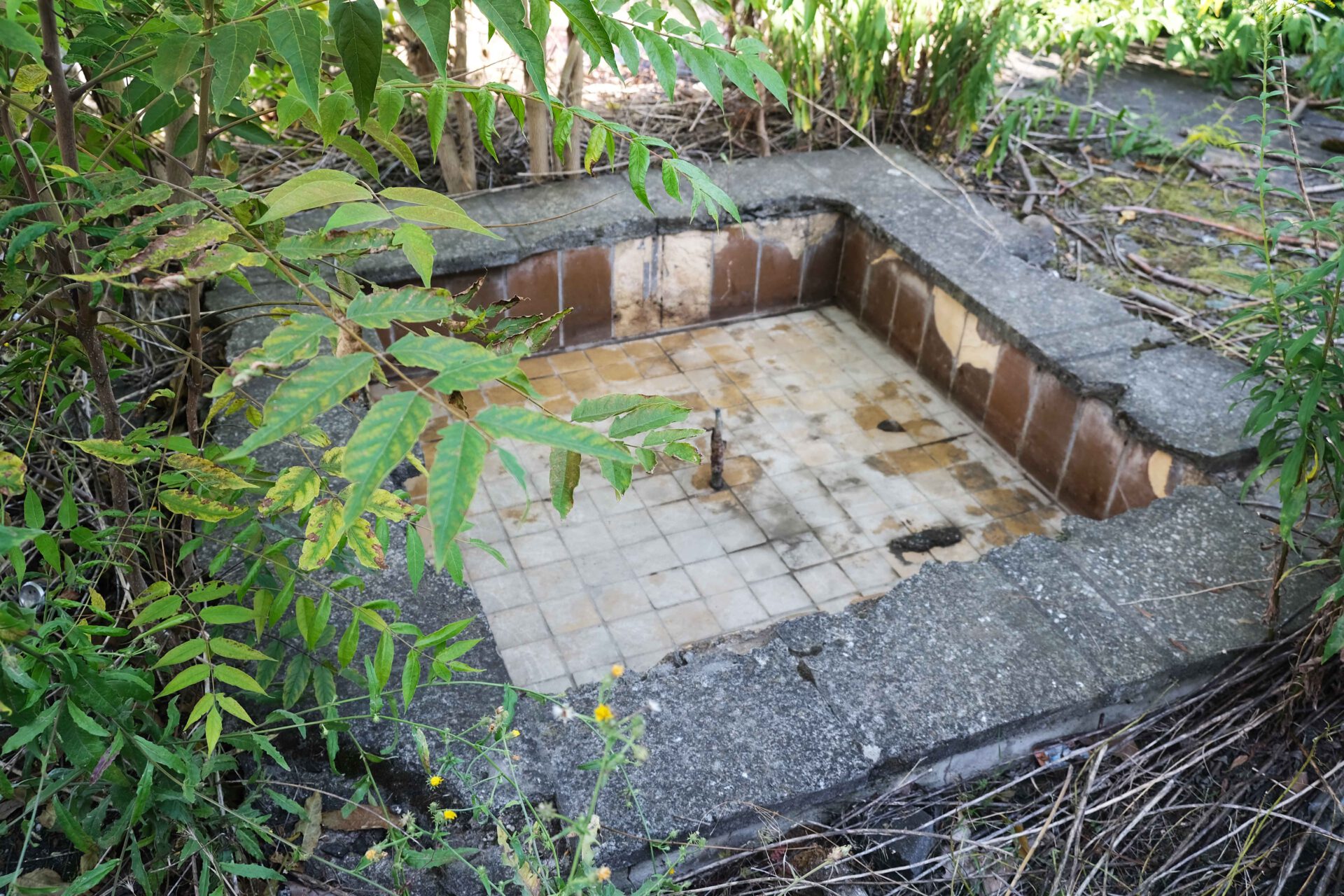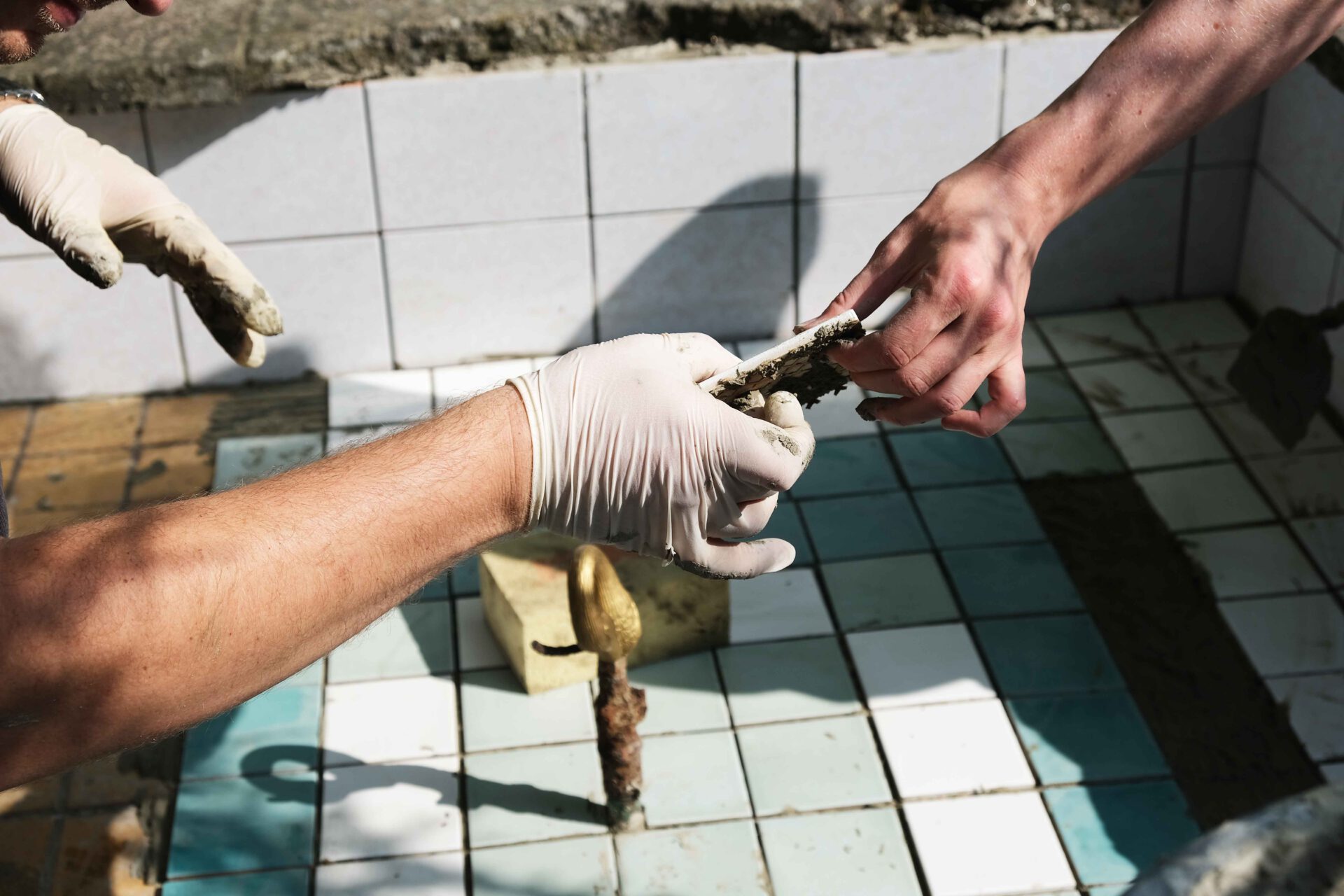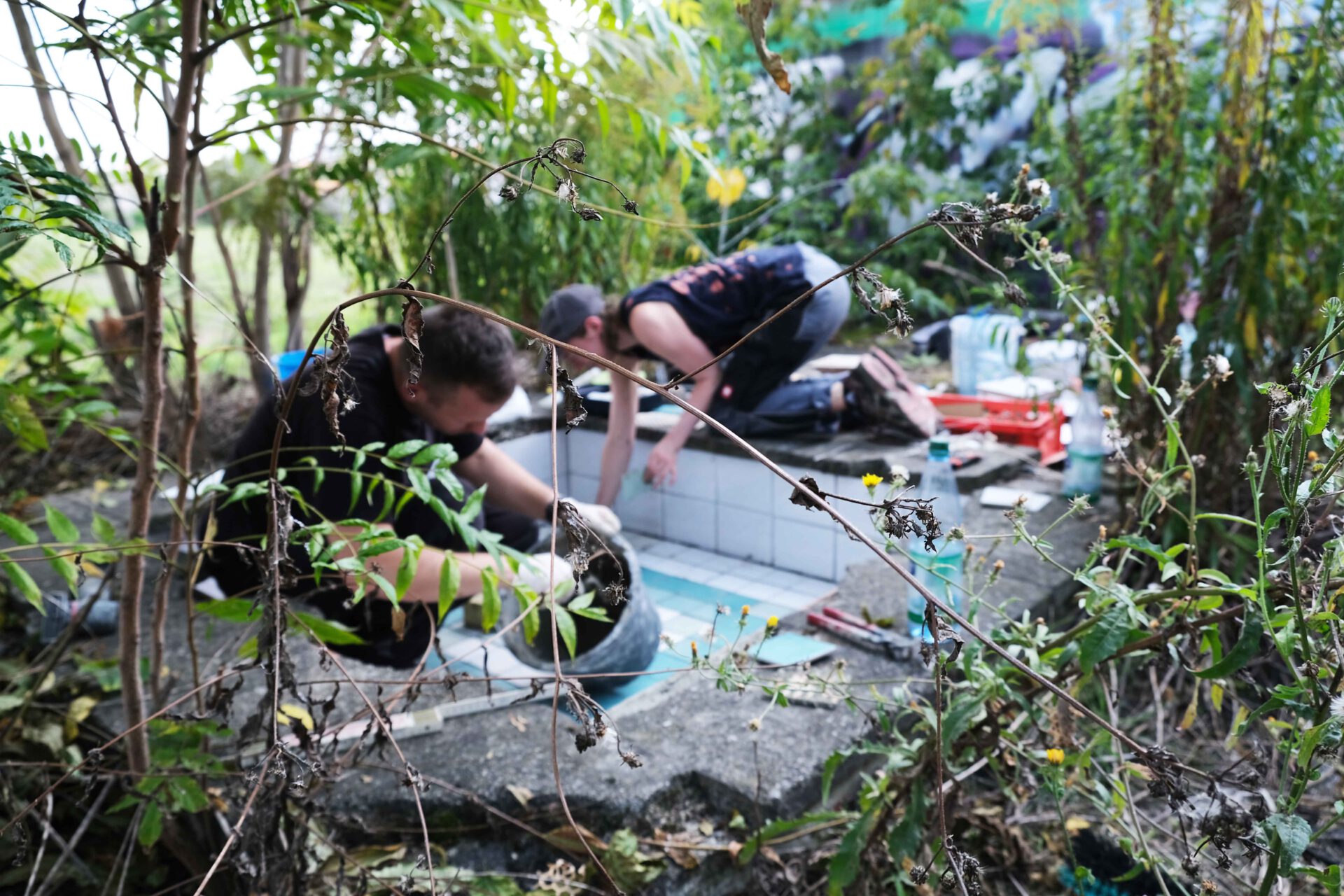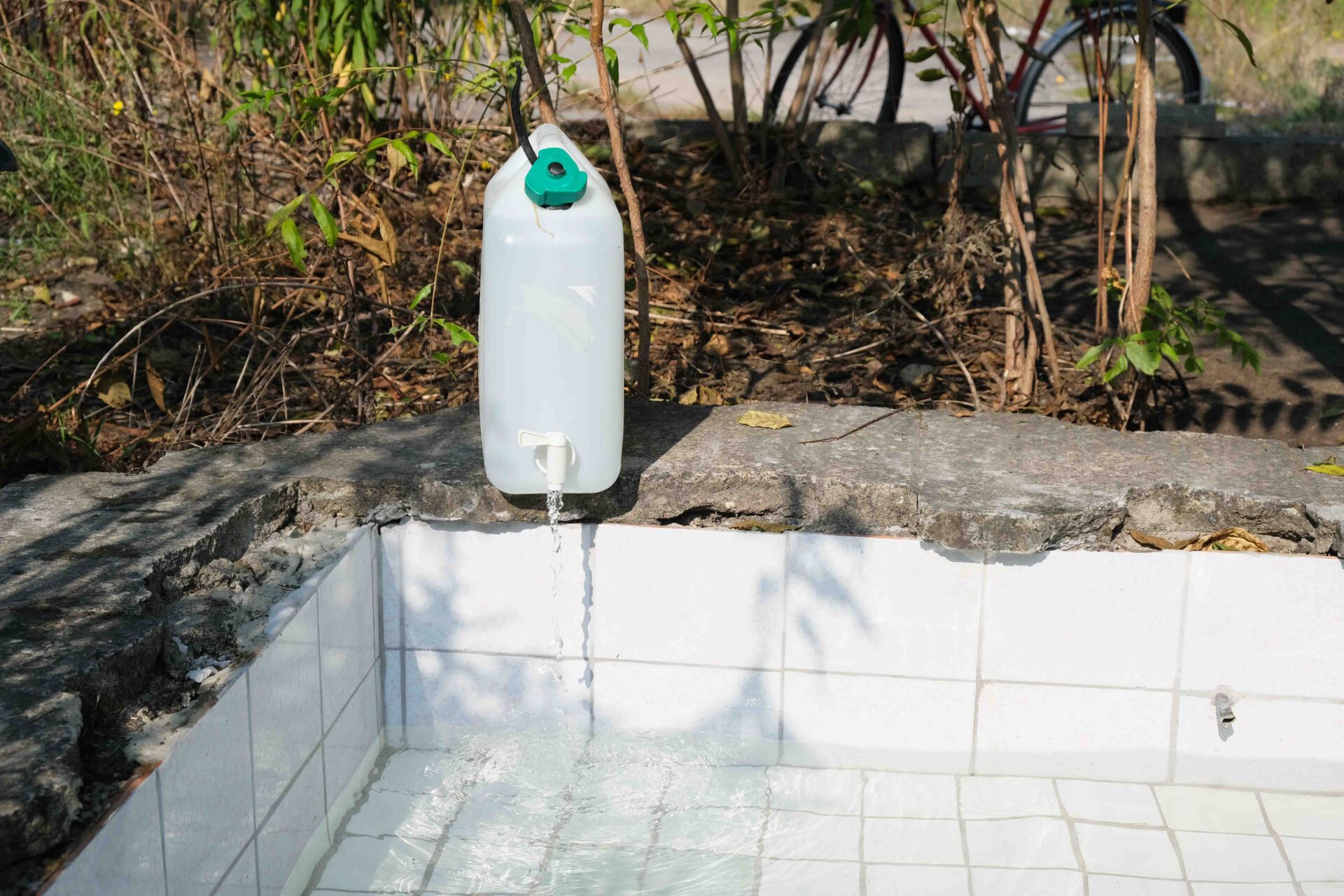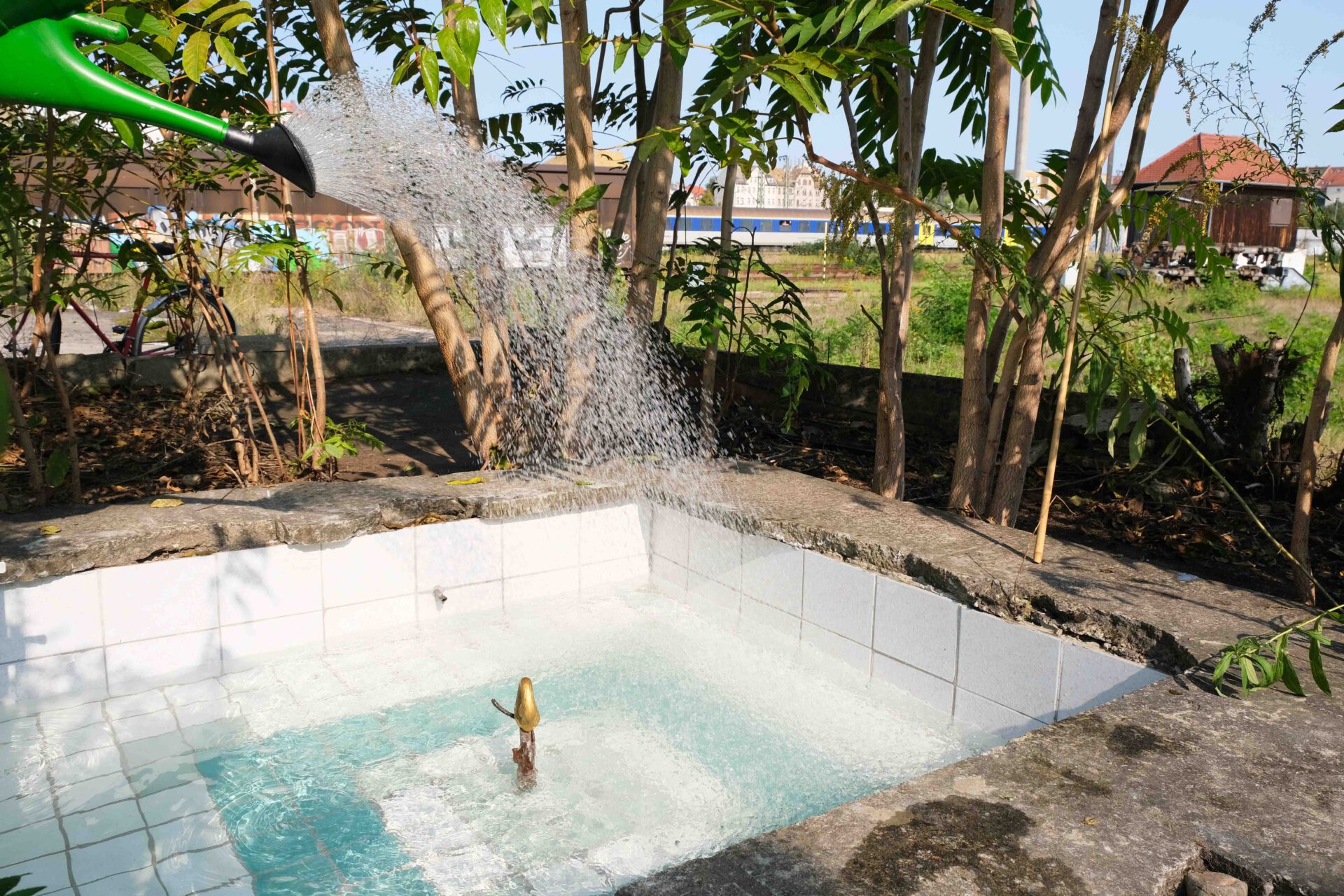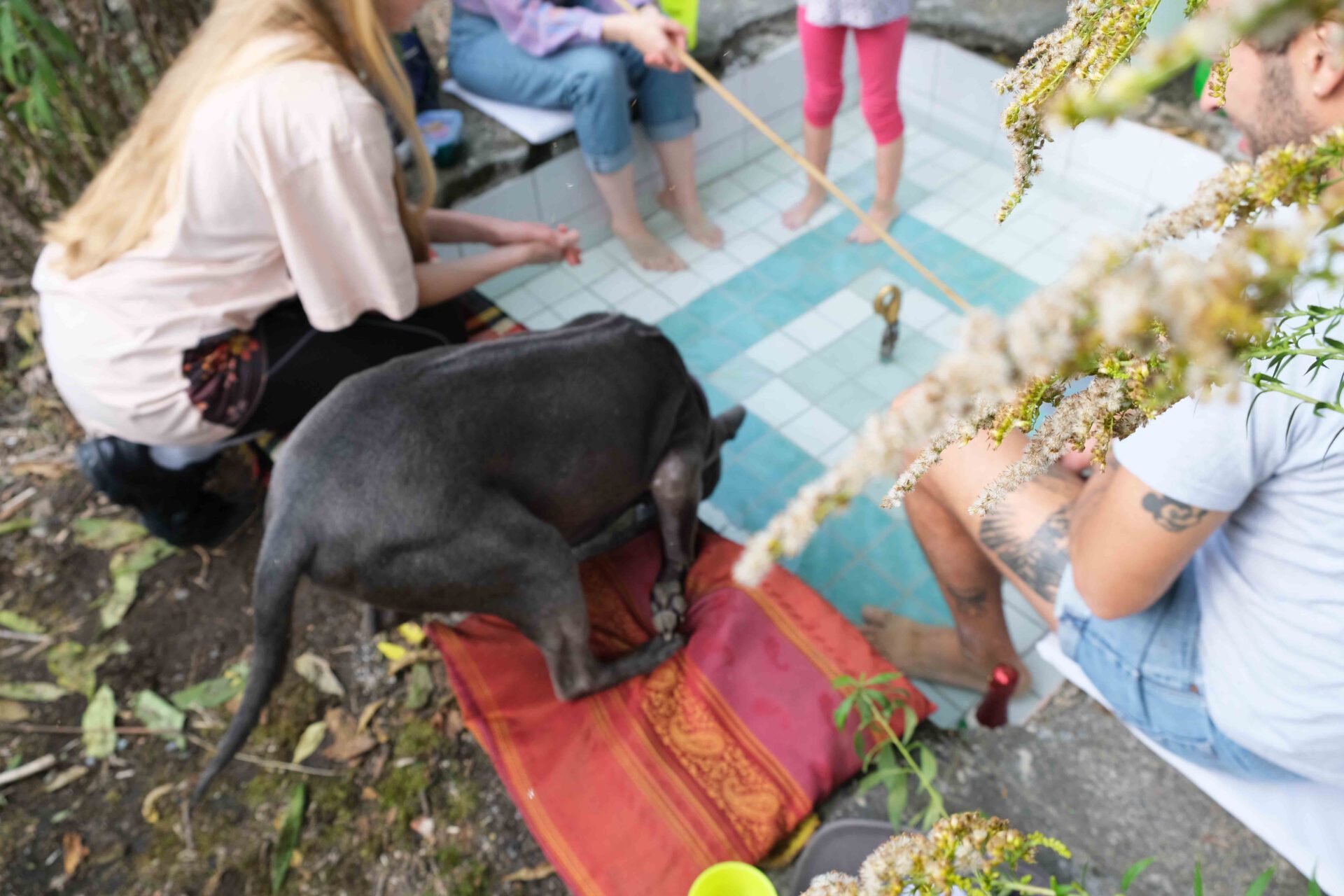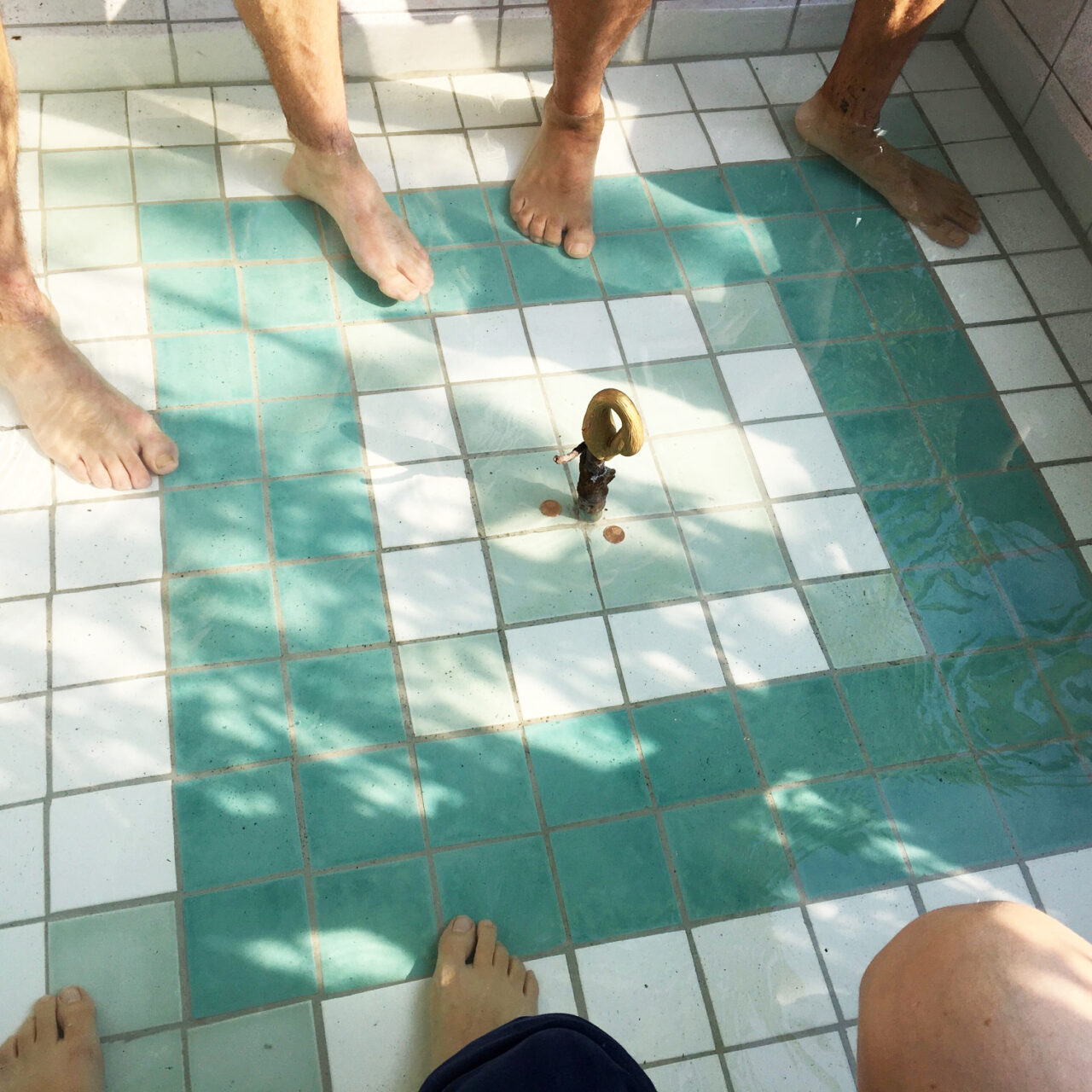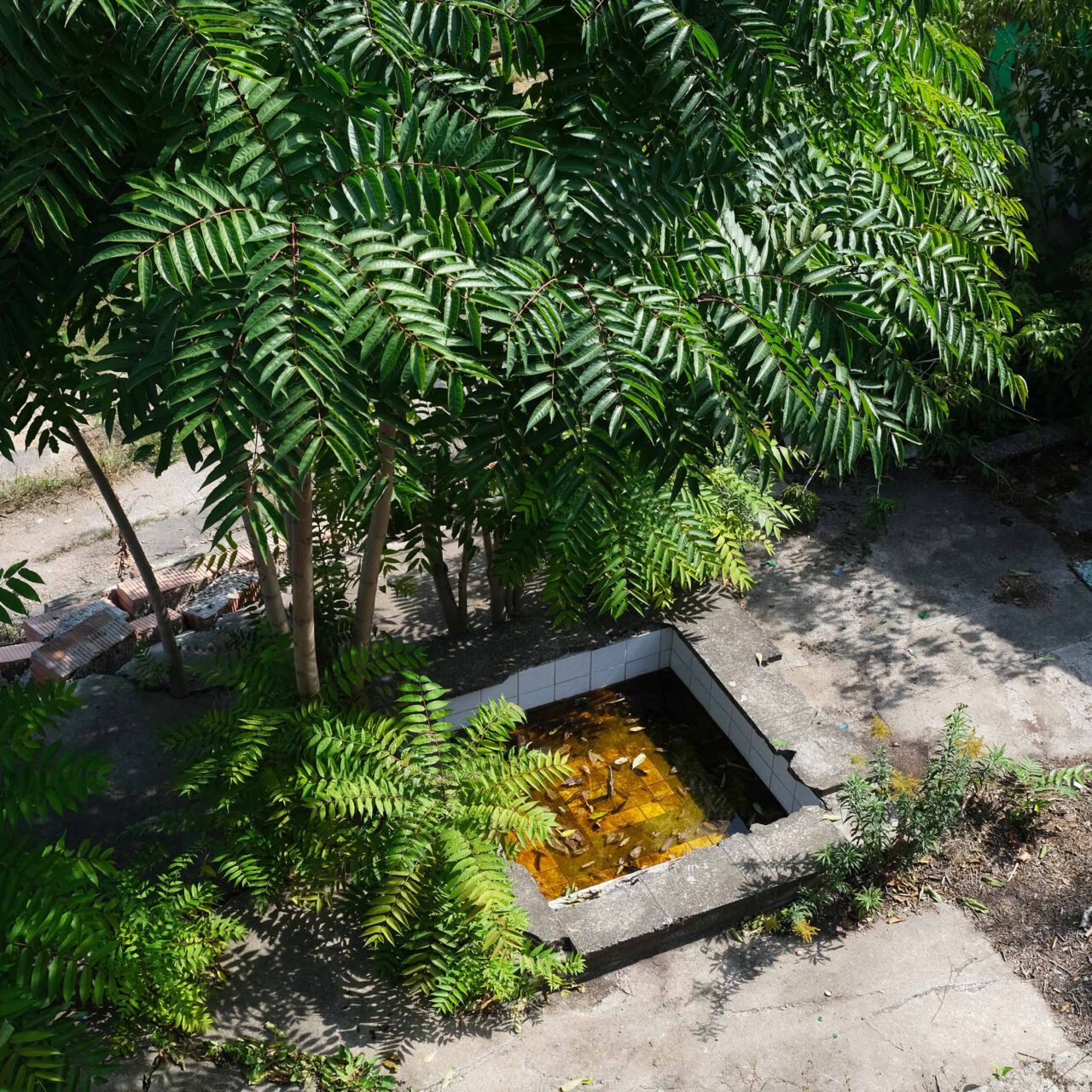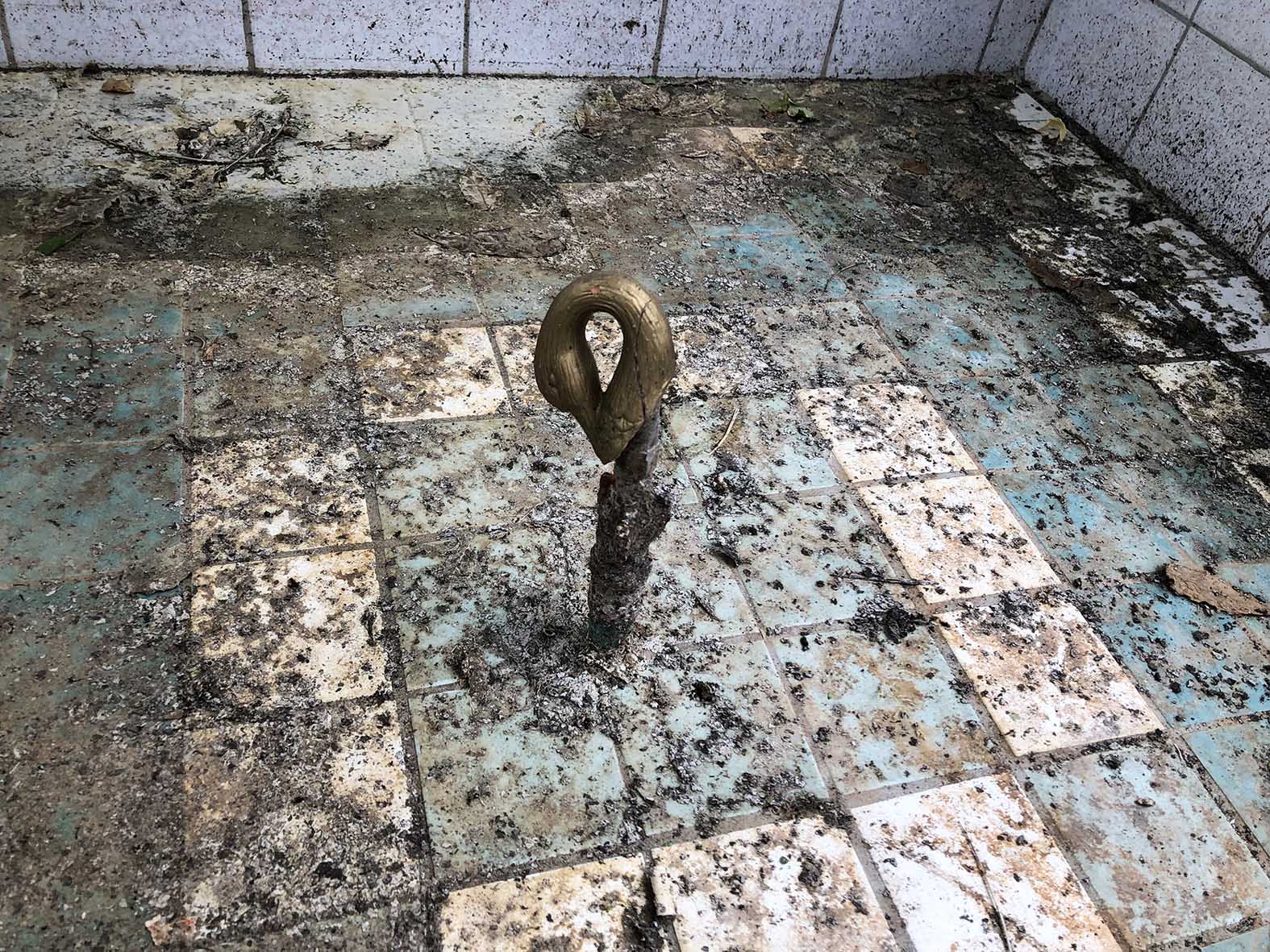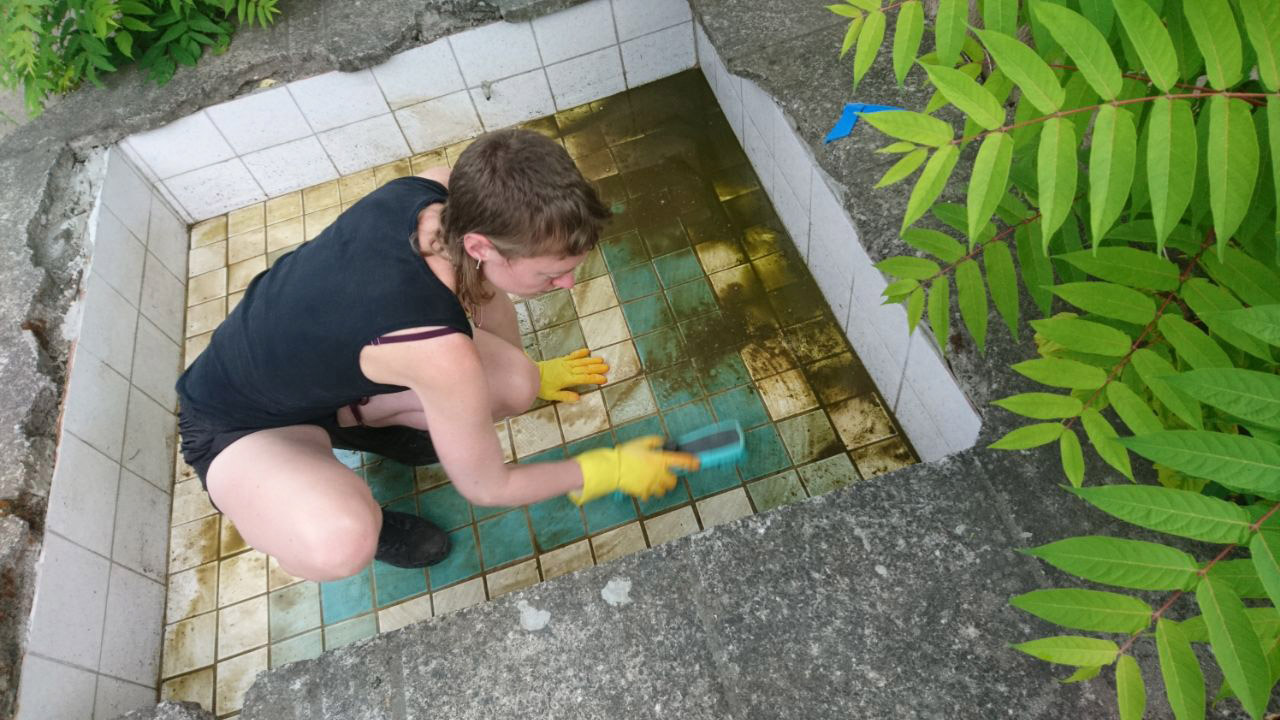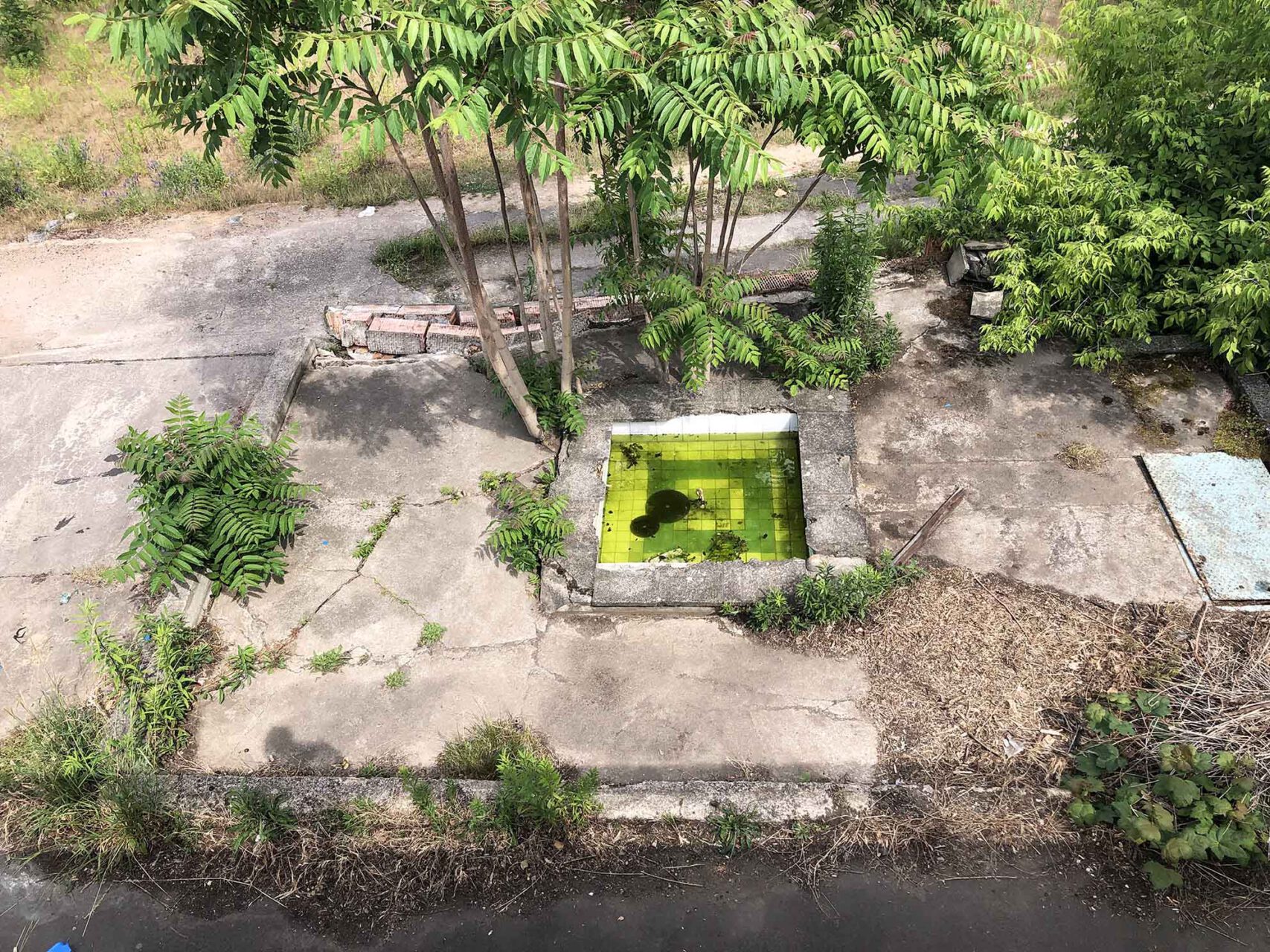seit 2021 fortlaufend // skulpturale Intervention und sozialer Ort im Stadtraum / Keramikfliesen, Arbeitskraft, Wasser / mit Unterstützung von Reiner Kaufhold
Fehlenden Ort hinzufügen begann 2021 als skulpturale Intervention im öffentlichen Raum. Auf einer Brachfläche im Leipziger Osten entdeckte ich einen zugewucherten Springbrunnen. Da es in dem dichtbesiedelten Kiez nicht viele öffentliche Erholungsorte gibt und gar keine Wasserspiele oder Brunnen, entfernte ich den Schlamm und Müll aus dem Becken und flieste es erneut. Mit Poolpartys, Putzaktionen und der Bereitschaft, Loszulassen, begleite und dokumentiere ich seitdem das Schicksal des Ortes.
In der Art, wie ich verändernd eingreife, möchte ich die Brache als wichtigen Bestandeil des Stadtbildes und als bereits ‚fertigen‘ öffentlichen Raum würdigen, der keines Makeovers bedarf. Der Pool ist meine Art, mich um die Brache als solche zu kümmern, anstatt sie von allem zu säubern, was einer Monetarisierung im Wege steht.
Durch Freiwilligenarbeit und Engagement kann viel erreicht werden. Doch auch auf politischer Ebene braucht es Konzepte für die behutsame Pflege und den Erhalt öffentlicher Flächen, die keinem bestimmten Zweck dienen, weil diese ein wichtiger und schöner Teil städtischen Lebens sind. 2024 wurde der Pool vom IDEAL Artspace in ihrer Ausstellungsreihe The Stories We Inhabit gefeatured:
„The Stories We Inhabit wirft in drei Episoden im IDEAL sowie im anliegenden Stadtraum Blicke auf Formen der Selbstorganisation im öffentlichen Raum und adressiert Fragen zu Repräsentation und Gestaltungsmacht innerhalb urbaner Planungen. Das Projekt beleuchtet Motive widerständiger Umcodierung und informeller Fortschreibungen städtischer Infrastruktur, untersucht poröse, provisorische Dramaturgien und folgt Ritualen, peripheren Erzählungen und Trampelpfaden im Stadtraum.“
Zitat: IDEAL Artspace
51°20’56.5″N 12°24’22.4″E
_____________________________________
Add a missing place // 2021 / Sculptural intervention and social place in the urban environment / Ceramic tiles, labour, water / with the help of Reiner Kaufhold
Add a missing place began in 2021 as a sculptural intervention in public space. On a wasteland I discovered an overgrown fountain. Since there are not many public places of recreation in the densely populated neighborhood and no water features or fountains at all, I removed the mud and trash from the basin and refloated it.
